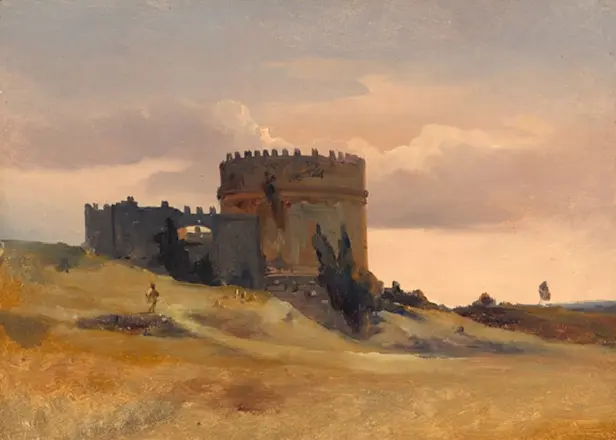1819 studying at the Paris School of fine arts in Antoine-Jean Gros, however, not adopted from the last drag of historical painting. More important for the creative development of Bonington was the friendship with Eugene Delacroix and Theodore géricault. At the Paris salon of 1824 Bonington received a gold medal in 1825, along with Delacroix went to London to study the work of jmw Turner and of the English historical school of painting.
The artistic influence of Bonington in the romantics of England and France was so great that it is felt even in the works of Camille Corot, the Impressionists and painters of the Barbizon school. No less successful was his work in lithography.
English artist. In 1817, with his family, Bonington moved to Calais, where he studied under françois Louis Francia, who painted watercolors in the English tradition. Then he went to Paris, where he works in the Studio of Gros (1821-1822). In 1821-1822 he visits the North of France, in 1823 - Belgium, in 1826 - Northern Italy and Venice. The landscape becomes the main theme; in 1822 he first sends to the Salon two channel watercolor. "The Cathedral and quay in Rouen" (CA. 1821, London, British Museum) belongs to the tradition of topographical types, but in later watercolors, more vivid in color and free in the manner already felt his Parisian lessons and a new flavor to oil painting. In the Salon of 1824 he exhibited four landscape oil and one watercolor, for which he receives a gold medal, as his fellow Constable and Copley Fielding. From 1825 Bonington annually travels to London where he soon became known. But the most significant event of his first visit was to get acquainted with Delacroix. Back in Paris, both artists work in the same workshop: Delacroix uses brilliant watercolor technique Bonington, and that, in turn, tries to write historical and Oriental scenes. The top short the artistic career of Bonington, which was interrupted by tuberculosis, became 1826. He paints a picture of the "Picardy coast" (Kingston upon hull, Gal. Ferens), which means painting conveys a heightened sense of atmosphere. In the summer he went to Italy; the changing light of Venice and its buildings are of bright colors perfect his technique. Studies performed here ("the Monument of count Leoni", watercolor, Paris, Louvre) are among the best of his works. He writes views of Venice and historical scenes ("Henry III and the Spanish envoy", London, the Wallace collection), which, despite its closeness to the works of Delacroix, testify to the keen interest of Bonington to Venetian painting. After 1824 he performs a number of lithographs and works on the book of Baron Taylor's "Picturesque journey in ancient France." Bonington - a remarkable personality in the artistic environment of France of the 1820s, at the same time, he is an excellent representative of the English school of painting. His work, influenced the development of landscape painting of the XIX century, was aptly characterized by Delacroix: "keen on their own virtuosity". Works from the workshop of Bonington was sold by Sotheby's on 29 and 30 June 1829, but many of the paintings remained in France. The artist's works are represented in major British museums (in particular, in Nottingham and London, the Wallace collection) and the Louvre ("Water parterres at Versailles, the Normandy coast").
-
Artworks liked by13 users
- Artworks in 1 collection and 14 selections
Exhibitions
All exhibitions of the artist




Feed
Watercolors of Britain. From Joseph William Turner to Helen Beatrix Potterexhibition finished













